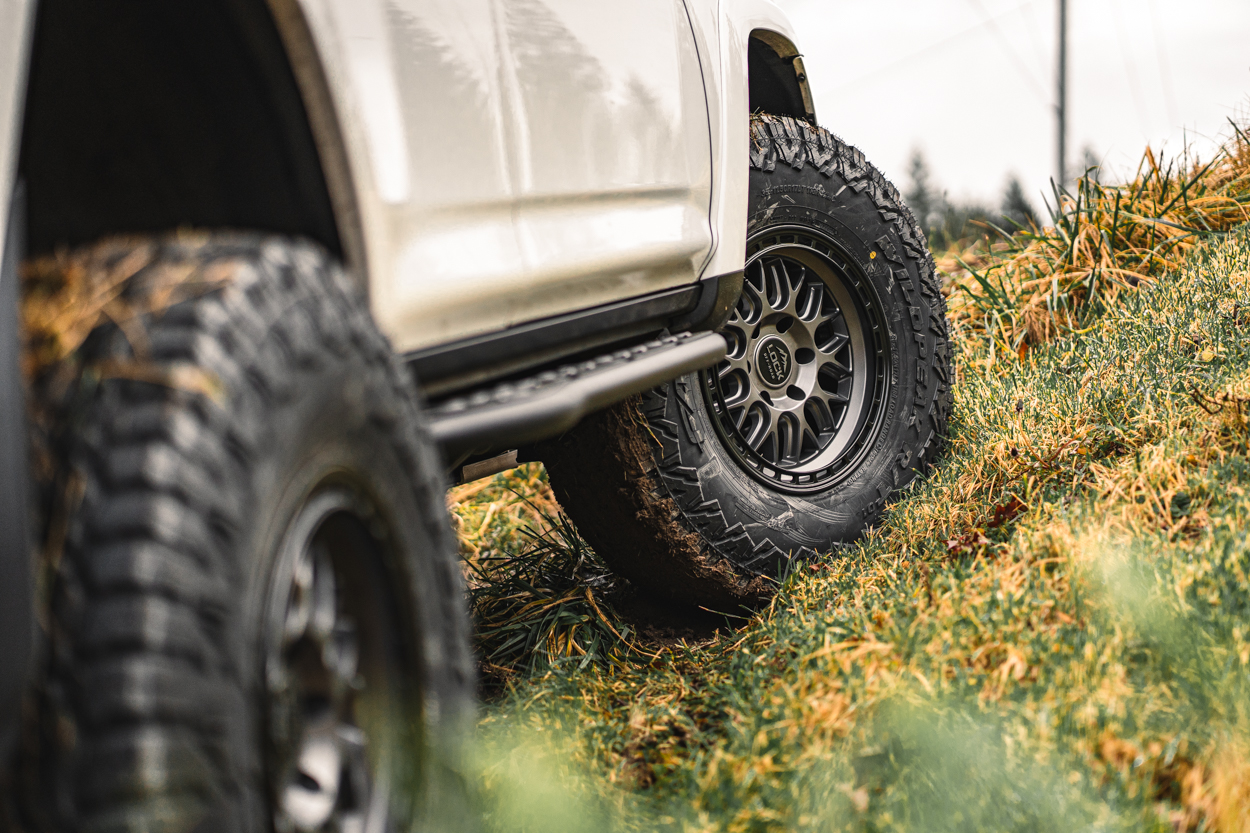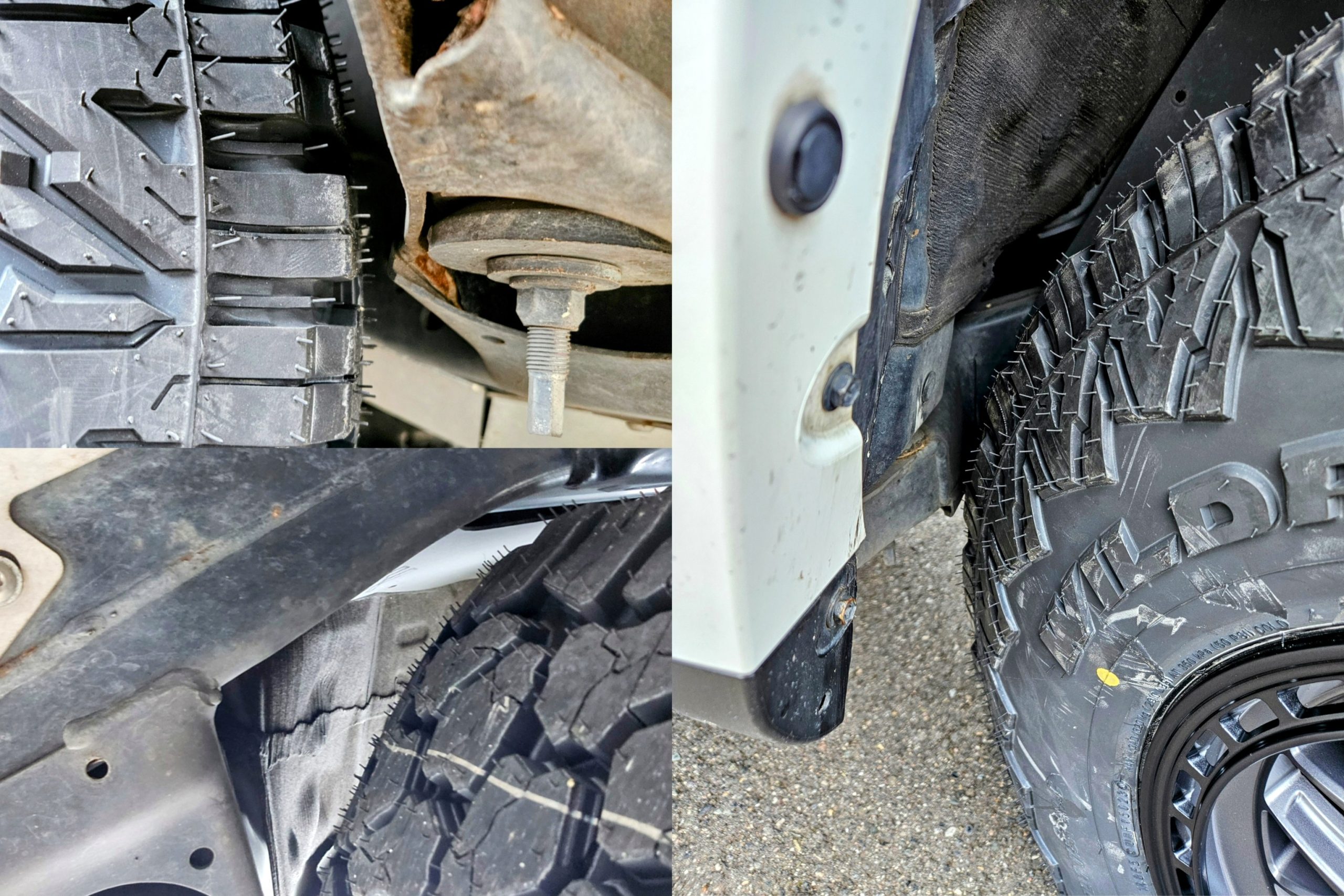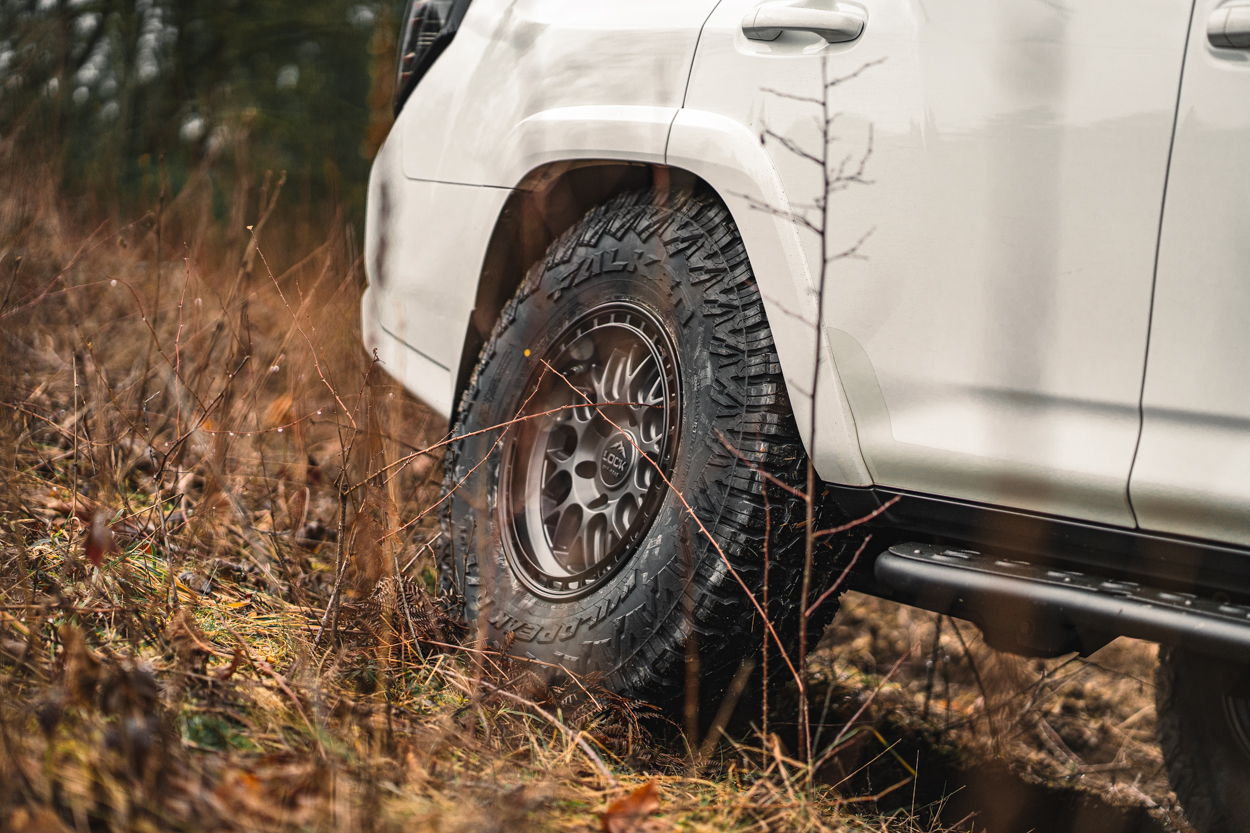
Whether you’ve dabbled in building your off-road rig or are a seasoned veteran, you’ve likely heard that “35s” are the gold standard for tires. This refers to the tire’s overall diameter in Flotation sizing versus the Metric sizing you’re probably used to seeing (roughly equivalent to 315/70R17).
Many off-roaders favor the former for its simple sizing, as the “35” is that diameter, no matter the rim size. There’s no guessing to determine the proper ratios that Metric sizing uses between the tire’s diameter, width, and rim size.
35s have been around for decades, long before overlanding became an internet sensation, and we all strived to make them fit just for Costco runs. They’ve always come in a 12.5″ width (35×12.5), so why have manufacturers started to come out with 11.5″ variants and “fix what ain’t broke”? Let’s dig into the pros and cons of each and determine what suits your needs best.
Table Of Contents
Pros & Cons

With 35×12.5 and 35×11.5 having the same diameter, you may wonder how impactful an inch of width can be (refrain from your 10-year-old self with this line). There’s a long-standing debate on how narrower (aka pizza cutter) tires are more effective off-road and in winter weather. An excellent video advocating for them by Tinkerer’s Adventure can be found here.
Pros
In summary, pizza cutters are generally more effective when airing down than wider tires. This is especially beneficial if you don’t have actual beadlock wheels and can’t safely air down to single-digit PSI levels. On the road, you can expect marginally better fuel efficiency due to less rolling resistance, though you’ve probably thrown that concern out the window if you’re considering 35s.
While 35×11.5 tires aren’t quite as narrow as true pizza cutters (255 or ~10″ width), this concept can still apply to a degree compared to 35×12.5.
Cons
The look. Skinny tires just don’t look as aggressive or provide the stance that car people love. Sure, you can justify why 35×11.5s are more practical, but you can’t deny that they don’t look as good as a meaty 35×12.5 tire.
The other major drawback to skinny 35s is the lack of brand options, which also makes tracking down spares if they are ever needed. This is a relatively new size in the market, so you’ll have a much harder time finding a matching spare in the event of a puncture, and only a handful of companies even offer it.
Why I Chose 35×11.5

I’m currently running Falken’s Wildpeak R/T01 in C load and size 35×11.5R17. In all honesty, I’d probably be more bothered by the slightly anemic look of these if it weren’t for the extra-aggressive sidewall design. That definitely helps offset the less aggressive stance.
For reference, I previously had 34″ tires (285/75R17) on -38mm offset wheels and would still rub at full lock in certain situations. This still happened despite having an aggressive body mount chop (BMC), high-caster alignment, and a lot of cutting and pushing inside the wheel well.
I paired the Falkens with a set of Onyx wheels from Lock Off-Road with a -12mm offset in hopes that a less aggressive offset would help the 35s fit without extra cutting. Despite the online sizing guides stating differently, both the 35×11.5 and 285/75 tires measured to be of similar width.
Fortunately, my plans panned out, and the new wheel/tire combo fits perfectly. I lost a bit of wheel poke, but I gained enough clearance for everything full lock, even while fully articulated. That was shocking, as I didn’t expect the change in offset alone to make that much of a difference. After all, it wasn’t like I was going back to the 17×7 OEM wheels with a positive offset.
However, I still need to decide whether I would prefer trading off larger tires that fit properly for a more aggressive stance.
Final Thoughts

Much like my struggle to justify why my 4Runner, which gets 15 MPG, is still suitable as a daily driver, 35×11.5 tires just makes more sense for my needs, at least regarding this diameter. They’re easier to fit than 35×12.5 and don’t require even more cutting than I’ve already done. They also weigh notably less, which makes for a better driving experience.
Sure, they don’t look as beefy, but I’d have to have a pretty bruised ego for a stranger’s judgment on my tire size to affect me. For the same reason why so many 4Runner owners choose to stick with 33″ tires, I’m just going with the size that works for my build.
Do you currently run 35s? If so, have you, or will you, look into their skinnier sibling? Let us know in the comments.

“both the 35×11.5 and 285/75 tires measured to be of similar width.”
I don’t think that’s true.
11.5 vs. ~11.25 is very close.
Man, thats pretty cool you can get full articulation and lock while being able to run 35s. Just by changing to a closer OE offset and narrower tire. For me leveled on stuffed 33s or lifted with 35s is the 4runner signature look. Im not too keen on all the trimming required for 35s, but this makes it a more appealing option.
It’s a happy medium for sure. Would I like a little more poke? Sure, but it’s the law of diminishing returns for me haha.
Nice write up Ryan, I was just having a conversation about this topic with a few buddies the other day.
Running 35×12.5R17 Toyo M/T right now. It works perfectly but I want to switch to 37/38″ and ideally I want 11.5.
Main concern for me is that 11.5 weighs less than 12.5/13.5 with the same diameter.
Unfortunately, I can’t find any 37/38×11.5R17 *M/T* tires. Anyone saw any options?
That’s a pretty skinny profile for that height of tire. I’ve never seen that size, but let us know if you find one!
I do find some options but they are only available in China, Mexico, Ukraine, Malaysia, etc. Can’t find anything in America.
Great article, Ryan! Did you regear or bash in your firewall at all when going to 35×11.5x?
I haven’t regeared, but I also don’t have heavy bumpers or a heavy RTT. My OTT makes things tolerable, for now haha. Haven’t obliterated the firewall either, just an aggressive BMC.